
Andy Lloyd's Dark Star Blog

Blog 36 (March 2016)
More Evidence for Planet Nine
One of the pair of Caltech scientists who announced in January that there was a very high probability that a 'super-Earth', dubbed 'Planet Nine', exists beyond Neptune (1,2), has noted that a newly discovered eccentric Kuiper Belt Object cuts down the possibility that they were wrong still further.
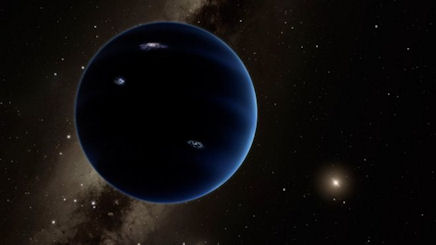
“The object [uo3L91] shares some of the same behavior as the other six Kuiper Belt bodies, suggesting it has also been pushed by a large planet that is between 200 and 1,200 times the distance from the Sun to Earth. The object was discovered by the Canada France Hawaii Telescope, which is conducting the Outer Solar System Origins Survey (OSSOS); information about its movements were presented recently by astronomer Michele Bannister at the SETI Institute.” (3)
Dr Mike Brown was straight off the marks with this latest discovery's potential tie-in with his proposed Planet Nine body, publically offering it as possible evidence before going through the usual peer-review process (4).
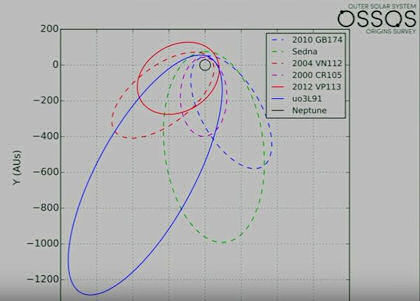
Data from Outer Solar System Origins Survey (OSSOS)
The discovery of one more extended scattered disk object showing the same sort of collective properties as the initial cluster of six studied by Drs Batygin and Brown may not seem too exciting on the face of it, but it goes a long way towards answering the following scholarly criticism of their initial proposal:
"Others, like planetary scientist Dave Jewitt, who discovered the Kuiper belt, are more cautious. The 0.007% chance that the clustering of the six objects is coincidental gives the planet claim a statistical significance of 3.8 sigma—beyond the 3-sigma threshold typically required to be taken seriously, but short of the 5 sigma that is sometimes used in fields like particle physics. That worries Jewitt, who has seen plenty of 3-sigma results disappear before. By reducing the dozen objects examined by Sheppard and Trujillo to six for their analysis, Batygin and Brown weakened their claim, he says. “I worry that the finding of a single new object that is not in the group would destroy the whole edifice,” says Jewitt, who is at UC Los Angeles. “It’s a game of sticks with only six sticks.”" (5)
Now it's a game with seven sticks, it seems.
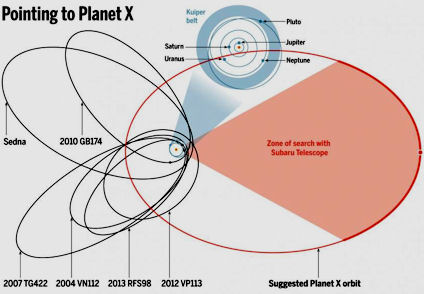
Image credit: (Data) JPL; Batygin and Brown/CALTECH;
(Diagram) A. Cuadra/Science (9)
Mike Brown thinks that this lowers the possibility of this statistical clustering being 'a fluke' to vanishingly low levels, as he described on his Twitter feed:
"I haven't done the statistics yet, but I suspect this takes the probability of this being a statistical fluke down to ~.001% or so." (6)
Meanwhile, one of the original progenitors of the Nemesis' theory from back in the 1980s, Daniel Whitmire, has mooted the possibility that Planet Nine might be the cause of periodic mass extinction events on Earth:
"Whitemire (sic) and [Professor John] Matese's theory is that as Planet X orbits the sun, its tilted orbit slowly rotates and Planet X passes through the Kuiper belt of comets every 27 million years, knocking comets into the inner solar system. The dislodged comets not only smash into the Earth, they also disintegrate in the inner solar system as they get nearer to the sun, reducing the amount of sunlight that reaches the Earth. In 1985, a look at the paleontological record supported the idea of regular comet showers dating back 250 million years. Newer research shows evidence of such events dating as far back as 500 million years." (7)
Dr Whitmire's original work concentrated on the existence of a multiple Jupiter-mass object lying in the very outer reaches of the solar system which affected comets in the outer Oort Cloud, sending periodic showers down towards the central solar system (8). We might call such an object a sub-brown dwarf these days, or perhaps a 'Class Y Ultra-Cool Brown Dwarf', in astronomical parlance (9). It's the object I believe to exist, too - an object I call the Dark Star. I think it's much closer than the Nemesis theory originally described, and that there may be good reason to believe that the presence of this object is obscured by a dusty nebula, preventing clear detection in visible or infra-red light (10,11).
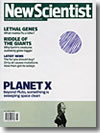
New Scientist cover, Dec 2002
Personally, I think there may be a multitude of bodies out there in the outer solar system, as per the ideas put forward by Eugene Chiang, an astronomer at the University of California, Berkeley back in 2005 (12), in response to the discoveries of various Kuiper belt Objects. His thoughts echo those of Alan Stern, of the Southwest Research Institute in Boulder, Colorado back in 2002 (13).
Chiang's concept of large-scale planetary migration early in the solar system's history seems appealing, suggesting not just a Planet Nine, a Planet X, but also Planets XI, XII, XIII etc:
"The oligarch theory of planet formation states that there were hundreds of planet-sized objects, known as oligarchs, in the early stages of the Solar System's evolution. In 2005, astronomer Eugene Chiang speculated that although some of these oligarchs became the planets we know today, most would have been flung outward by gravitational interactions. Some may have escaped the Solar System altogether to become free-floating planets, whereas others would be orbiting in a halo around the Solar System, with orbital periods of millions of years. This halo would lie at between 1,000 and 10,000 AU from the Sun, or between a third and a thirtieth the distance to the Oort cloud." (14)
And yet, there does not appear to be a continuum of objects from the Kuiper Belt out towards the inner Oort Cloud, but rather a long gap punctuated by the extended scattered disk objects so tantalisingly suggestive of a distant Planet X object. This 'Kuiper Cliff' suggests that something, probably Planet Nine in whatever guise it eventually makes itself known, has swept out the gap, and laid claim on this territory all for itself. Note, this, from back in 2002:
""There's something funny going on out there." Marc Buie of the Lowell Observatory in Arizona is talking about a strange feature at the far edge of our solar system beyond Pluto, among the swarm of small worlds called the Kuiper Belt. It's a wild, uncharted place out there, teeming with icy celestial bodies that may give us essential clues to how the planets formed. It may even be a breeding ground for life. But what's intriguing Buie at the moment is the very edge, about 50 times further out from the Sun than the Earth's orbit. Here, at the "Kuiper Cliff", the number of astronomical objects drops off precipitously. Buie won't be drawn too far but, when pressed, he speaks of the possibility that some "massive object" has swept the zone clean of debris..." (15)
Such thinking would seem to support Daniel Whitmire's claim that a Planet X body might periodically graze the outer edge of the Kuiper Belt, occasionally sending showers of objects in all directions whilst shaping that very belt.
However, the fact is, we still don't really understand what's out there beyond the Kuiper Belt. Science goes through phases of favouring various hypotheses, and until the last couple of decades or so was pretty much set on destroying the very concept of Planet X, and all who foolishly were to associate themselves with it. The 'belief' that a Planet X body might exist was confined to the fringes. Planets couldn't be found out there, it was declared, because theory of solar system planet formation simply wouldn't allow for it, and previously declared anomalies could be explained away (16).
With the discoveries of anomalous extended Kuiper Belt Objects, that thinking has gradually changed, to the point now where the scientific community is broadly expectant of a major planetary discovery in the next few years. But I think it's worth noting that whatever that discovery might bring, it doesn't mean that that's necessarily the end of the hunt for new planets in the outer solar system. Indeed, breaking through that initial scientific taboo opens up the field to all manner of possibilities.
Written by Andy Lloyd,
31st March 2016
References:
1
) Andy Lloyd "Massive Planet X Now Urgently Sought by Top Planet-Hunters" 20-23 January 2016andylloyd.org/darkstarblog34.htm
2) Konstantin Batygin & Michael Brown "Evidence for a Distant Giant Planet in the Solar System" The Astronomical Journal, 151: 2, 20 January 2016,
3) Loren Grush “Scientist claims there's even more evidence of Planet Nine's existence” 25 March 2016, with thanks to Eitan
4) Andrew Griffin "Planet Nine: Scientists find more evidence that hidden planet is sitting at the edge of our solar system" 27 March 2016, with thanks to Lee
5) Eric Hand "Astronomers say a Neptune-sized planet lurks beyond Pluto" 20 June 2016, with thanks to Lee
6) Dr Mike Brown, 24 March 2016,
7) Bob Whitby "Researcher links mass extinctions to 'Planet X'" 30 March 2016, with thanks to Jim
8) D. Whitmire & A. Jackson "Are periodic mass extinctions driven by a distant solar companion?", Nature, 308: (5961): 713–715, 1984,
9) "Astronomy & Cosmology - Stars - Stellar Classes: Type L, T & Y Cool Brown Dwarf Stars"
10) Andy Lloyd "The Shroud Hypothesis as part of a Dark Star Solution" 9 February 2016
andylloyd.org/darkstarblog35.htm
11) Andy Lloyd "The Cumulative Effect of Intermittent Interstellar Medium Inundation Upon Objects In The Outer Solar System" Feb 2016, DOI: 10.13140/RG.2.1.5112.5526 - an updated version (22/2/16) is available here:
12) "Far-out worlds, just waiting to be found" New Scientist, issue 2509, 23 July 2005
13) Andy Lloyd "Planet X is sweeping out the Kuiper Belt - Official!" December 2002
14) "Planets beyond Neptune"
wikipedia.org/wiki/Planets_beyond_Neptune
15) H. Couper & N. Henbest “The Hunt for Planet X” New Scientist, pp30-4, 14 December 2002
16) Myles Standish "Planet X – No dynamical evidence in the optical observations" 16 July 1992, Astronomical Journal 105: (5), 2000–2006.
Dark Star Symbolism in the Zohar
Last month, I discussed the assumed orbital period of Nibiru, 3600 years, and how Zecharia Sitchin may have arrived at that figure (1). This included a description of a journey to 'Olam' through seven heavens of 500 years each mentioned in a conversation between a heretic and the Jewish savant Rabbi Gamliel. Sitchin may have been influenced by this Hebrew text when he considered the likely orbital period of Nibiru/Marduk, a Planet X body which he described from his reading and interpretation of various ancient Sumerian texts (2).
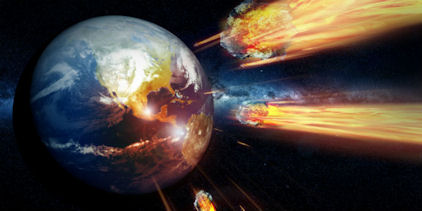
Talk of the return of Nibiru, particularly as a potentially catastrophic event, has been widespread for decades. It seems to feed into a feeling of dread of the 'End of Days', which may be a peculiarity of our times, or perhaps has always been with us since ancient times. Either way, the concept of Sitchin's Nibiru has become a magnet for all manner of claims and predictions of imminent catastrophe raining down from us from the heavens.
So, perhaps it is not particularly surprising that such ideas are now circulating within fringe elements of Judaism, and are being openly discussed by various Rabbis (3). Whether this is truly significant or not, what's emerging from these discussions are Jewish textual fragments which contain fairly straightforward descriptions of a visitation of a complex celestial entity. For instance, the appearance of a star at the End of Days is plainly spoken of in the Zohar, Judaism’s primary mystical text, written by the 2nd century sage, Rabbi Shimon bar Yochai. Included in the Zohar is this messianic prediction:
“At that time Melech Hamoshiach (Messiah the King) will awaken and go out from Gan Eden (Garden of Eden), from the place called Kan Tzippor, and will be revealed in the Galil (Galilee)…. A star will arise from the East side, flaming with all colors, and seven other stars will go around this star and make a war with it on all sides three times a day for 70 days, and all the people of the world will see.” (4)
You will note that this celestial entity is a complex, multi-coloured affair with a retinue of seven other ‘stars’ in its wake, revolving around it. These would presumably be seven moons or planets orbiting a central Planet X body, which would presumably be quite sizeable. The 70 days mentioned would then describe the visible period of the planet/star’s perihelion passage around the Sun, during which time its own system of planets/moons is visibly revolving around itself. There are a number of similar descriptions from Jewish texts available on the Internet (5).
What’s fascinating for me is that this Dark Star symbolism (a large central planet (sub-brown dwarf?) contained within a colourful aura, and accompanied by its own system of worlds) is associated with a returning Messiah, and was written about during an historical period of time when there was a great deal of expectation about the imminent coming of a Messiah.
Sitchin's original timings for Nibiru included the date 3760BCE, which would then have placed the next return to 160BCE, during the Graeco-Roman period. Sitchin later pulled the date of the last return back to coincide with the destruction of the First Temple of Jerusalem by the Babylonians in the 6th Century BCE. There does not appear to have been an historic record of a return of this celestial body on either occasion, however. Perhaps that is because (a) it simply doesn't exist, (b) the orbital period is much longer than Sitchin suggested, (c) it failed to appear as predicted, leading to a sense of loss and disappointment during a period of Messianic fervour in the Levant.
Probably much like today, then.
I suspect the truth of this lies in the dissemination of ancient knowledge down through various cultures through history. When the Babylonians sacked Jerusalem and dragged much of the population of Israel off into slavery, they likely imparted much of their knowledge (which they themselves derived from the Akkadians, and Sumerians before them) to the teachers and leaders of the enslaved clans of Israel. The symbolisms thus found new life in Jewish texts, many of which were compiled around that time. Many took on a predictive element within mystical passages. What's important is where these passages were initially derived from, and the consistent descriptions they provide us of this rather unique celestial phenomenon.
Again, it's little wonder that Zecharia Sitchin, himself of Jewish descent, would be influenced strongly by such imagery. However, I think that the orbital period of Nibiru, which he pegged to the Sumerian Sar of 3600 years, likely needs re-considering. This entity is probably much further out in the solar system than generally thought.
Written by Andy Lloyd, 7th March 2016
References:
1) Andy Lloyd "3600?" 8 February 2016
andylloyd.org/darkstarblog35.htm
2) Zecharia Sitchin "The Twelfth Planet" Avon 1976
3) Adam Eliyahu Berkowitz “Super-Comet Nibiru Could Threaten Entire Planet, Warns Prominent Rabbi” 4th March 2016, with thanks to Jesse
breakingisraelnews.com article
4) Rivkah Lambert Adler “Nibiru, Planet X, Gaining Traction Among Rabbinic Voices as Harbinger of End of Days” 22 February 2016
breakingisraelnews.com article
5) Rabbi Daniel Travis "The Star of Mashiach" 5 February 2016
nibiruiscoming.blogspot.co.uk article
Did Humans Kill Off Homo Floresiensis?
There are three sub-species of humans, all now extinct, which lived alongside modern humans, within the last 100,000 years. They are the Neanderthals (mostly of Europe), the Denisovans (or Siberia) and the 'Hobbits' (of Indonesia), known by their scientific name Homo Floresiensis. The first remains of the latter pygmy hobbits were discovered in 2004, in a cave on the Indonesian island of Flores, and bared some resemblance to Homo Erectus, but from a completely different era (1). It was thought at the time, from what were very carefully conducted archaeological digs, that some of the hobbit remains dated from only 13,000 years ago, around the time of the end of the last Ice Age.

Image Credit: Ira Block, National Geographic Creative
New studies, the details of which have been released his week, set the dates of when the cave was occupied back considerably:
"The new analysis, published today in Nature, asserts that the skeletal remains of H. floresiensis are more likely between 100,000 and 60,000 years old, and their stone tools date from as far back as 190,000 years to around 50,000 years ago. That suggests these evolutionary cousins did not exist for long after modern humans arrived in the region some 50,000 years ago." (2)
The final dating, of around 50,000 years ago, places their demise in the same kind of time period as human migrations into South-east Asia. None of this solves the mystery of the nature of the hobbits, whose very classification as a separate sub-species of human is still subject to some scholarly debate. Perhaps they are a direct descendent from Homo Erectus, evolving in isolation in Indonesia? Perhaps this isolated 'tribe' of pygmy humans suffered with a genetic abnormality causing microcephaly?
If you want to go down the Sitchinite route, then one might imagine that the hobbits are remnants of the hominins who hadn't been messed with. What seems likely, however, is that, as with so many other species on our planet, their downfall came in the guise of us.
Written by Andy Lloyd,
31st March 2016
References:
1
) Andy Lloyd "Homo Floresiensis" 13-20 November 2004,2) Adam Hoffman "Did Modern Humans Wipe Out the 'Hobbits'?" 30 March 2016
nationalgeographic.com article
The Most Eccentric Planet Yet
A recent discovery of a new exoplanet has revealed a Jupiter-sized world which whizzes around its parent star as if it were a comet. The planet, dubbed HD 20782b, is located some 117 light years away, and was discovered initially from the a signal of reflected light as the planet made its closest approach to the star.
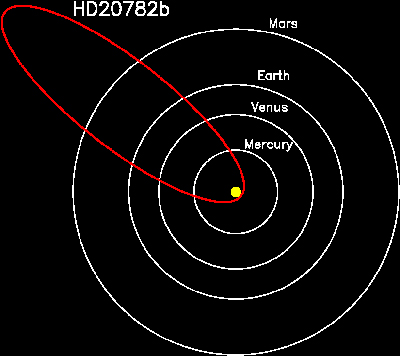
"The orbit of the planet HD 20782 relative to the inner planets of our solar system. (1)
The planet has a minimum mass twice that of Jupiter and orbits a star known as HD 20782, which is part of a wide binary star system with HD 20781. Incredibly, studies of the system showed that the orbit of HD 20782b displays an eccentricity of 0.96, a flattened ellipse which is the most extreme yet to be discovered (1,2). Yet, the very pace of the perihelion transit this planet experiences as it whips past the star may be its saving grace - it's is simply moving too fast, the planet's discoverers think, to be stripped of its atmosphere like many of the so-called 'hot Jupiter' class exoplanets.
This planet creates a fascinating precedent for a hypothetical highly eccentric planet such as the mythical 'Nibiru'. Of course, the dynamics of the solar system compared with HD 20782 are very different. HD 20782 is part of a binary star system, where our system is (presumably) not.
"Extrasolar planets like HD 20782 contain a wealth of questions for astronomers, [SF State astronomer Stephen] Kane said. "When we see a planet like this that is in an eccentric orbit, it can be really hard to try and explain how it got that way," he explained. "It's kind of like looking at a murder scene, like those people who examine blood spatter patterns on the walls. You know something bad has happened, but you need to figure out what it was that caused it."
"There are few possible "suspects" in the case of HD 20782, Kane noted. It could be that there was originally more than one planet in the system, and one planet developed an unstable orbit that brought the two planets too close together. This collision or near-collision might have ejected one planet from the system entirely and pushed HD 20782 on its eccentric path. The planet is in a binary star system, so it might also be the case that the second star in the binary made a close approach that threw HD 20782 off a more circular orbit." (1)
These kind of considerations are not significantly different from those mooted by Zecharia Sitchin for Nibiru, as outlined, he argued, in the Babylonian creation epic Enuma Elish (3). Catastrophism early in the history of a star system disrupts its smooth flow, potentially perturbing one of its planets into a highly eccentric orbit.
Written by Andy Lloyd,
29th March 2016
References:
1
) SFSU Press Release “Most eccentric planet known flashes astronomers with reflected light” 16 March 2016, with thanks to Lee2) Stephen Kane, et al “Evidence for reflected light from the most eccentric exoplanet known" The Astrophysical Journal, 821: 65, 29 February 2016
3) Zecharia Sitchin "The Twelfth Planet" Avon 1976
Caesar's Star
I received some correspondence recently from an anonymous writer who was discussing the length of Nibiru's orbit with respect to the Babylonian Sar (1). In his/her email, Caesar's comet came up - an event which is said to have taken place in 44 BCE, shortly after the assassination of the Roman dictator, Julius Caesar. The appearance of this star, thought to be a very bright, daytime comet (indeed, possibly the brightest comet in all recorded history), was recorded by the Romans and the Chinese - although there are actually very few descriptions of such a remarkable comet at the time it took place, which has led some scholars to doubt that this was really an historical event (2).
It is said to have appeared for about 7 days, and may have had a magnitude as high as -4, similar to Venus at its brightest. This comet, if such it was, is not a short-period comet, and may have either disintegrated during its perihelion passage, or returned back to the outer solar system (at which point it may be about 800 AU away by now.
"Modern studies of records of Roman and Chinese stargazers place this great comet in the constellations Gemini and Auriga in May, where it reached a brilliant magnitude -3 as it passed the Sun. The comet then moved northward and faded to magnitude +5 by early July. It suddenly brightened again, perhaps as material was ejected from the nucleus and set aglow by the Sun. By mid-July, during Caesar’s games, the comet shone at magnitude -4 to -5 in Cassiopeia, as bright as the planet Venus and possibly visible in the daylight, making it one of the brightest comets in recorded history." (3)
The discussion or this object as a flaming star is of some interest. The star/comet became a symbol for the deification of Julius by his successor, Augustus. A temple was built featuring a huge statue of Julius Caesar whose forehead was emblazoned with a flaming star. Here's what the Roman poet Ovid had to say about it, some time later during the reign of Augustus:
"To make that soul a star that burns forever
and
"Then Jupiter, the Father, spoke…“Take up Caesar’s spirit from his murdered corpse, and change it into a star, so that the deified Julius may always look down from his high temple on our Capitol and forum.” He had barely finished, when gentle Venus stood in the midst of the Senate, seen by no one, and took up the newly freed spirit of her Caesar from his body, and preventing it from vanishing into the air, carried it towards the glorious stars. As she carried it, she felt it glow and take fire, and loosed it from her breast: it climbed higher than the moon, and drawing behind it a fiery tail, shone as a star." (5)
The deification of Julius through the incorporation of this flaming 8-rayed star was featured on a famous coin, also minted during Augustus' reign, c.19 BCE (5).

I've had a long-time interest in whether there was a sighting of an anomalous star during the Graeco-Roman era. This stems from Zecharia Sitchin's initial assertion that his proposed Planet X body Nibiru appeared in the skies in 3760 BCE, and had a 3600 year orbit (the Babylonian sar spoken of above). Such a situation would place the next historical return of this planet around 160 BCE, during the period of history when there was a much-anticipated return of a messiah.

I've speculated in the past that such an occurrence may have been connected to the alleged 'red Sirius' anomaly, of the same era (6). In other words, the anomalous appearance of a red Sirius in the Graeco-Roman period, which has been described by Ptolemy and Seneca. Unconvincing explanations for this anomaly (Sirius is self-evidently white) have been put forward in several occasions (7,8).
The various descriptions of a red Sirius took place over a long period of time. I wonder whether the descriptions of this 'burning', 'fiery' Caesar's Star of 44 BCE might fall into a similar category? On the face of it, the simplest explanation for the appearance of this bright star is that its was a transient, long-period comet which disintegrated during perihelion. But, just possibly, it was a misidentified phenomenon which related to something else entirely.
Written by Andy Lloyd,
20th March 2016
References:
1
) Anonymous correspondence received 13 March 20162) "Caesar's Comet"
wikipedia.org/wiki/Caesar%27s_Comet
3) Brian Ventrudo "Caesar’s Comet" 9 March 2013
oneminuteastronomer.com article
4) Ovid "Metamorphoses" XV, 840
5) "Caesar’s Comet (The Julian Star)"
6) Andy Lloyd "The Messianic Star Identified" 21 August 2000
7) D.C.B. Whittet "A Physical Interpretation of the ‘red Sirius’ Anomaly" Mon. Not. R. Astron. Soc., 310, 335-359 (1999)
8) R. Ceregioli "Solving the Puzzle of ‘Red’ Sirius" J. Hist. Astron., 27: 2, 93, 1996
Meteor Events on the Rise
An excellent new article, "NASA space data supports citizens' observations: Meteor fireballs are increasing dramatically"
, written in January 2016, was recently posted onto the Dark Star Planet X forum during a discussion about an increase in meteor activity globally over the last few years (1). It's a terrific article, full of lots of supportive data and facts.
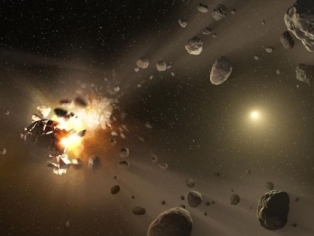
A quite worrying trend quickly becomes clear: The number of meteors is steadily on the rise! An example was the so-called 'St Patrick's Day meteor' over Staffordshire this month (2). The author of the report, Dr Rose, argues two possible explanations: The effect of a Nemesis-type body, or that of 'Centaurs', upon the Oort Cloud of comets. The article is certainly worth a peruse, and will add fuel to the fire for anyone concerned about an impending catastrophic event. The arrival in our immediate vicinity of two probable comet fragments, which may be familial, on 21st March 2016 (3) raises the question further of just what exactly is going on right now?
That event led to some rather wild speculation about the fulfilment of an old Hopi prophecy, tied in with the return of the Sun's brown dwarf sister (4). I suppose I should take some of the blame/credit for the widespread discussion of the return of Nibiru in the guise of a flaming destroyer brown dwarf star, somehow hidden from view from all of the world's telescopes, big and small (it's thought to be practically upon us, and has been for as long as I can remember). After all, I first put forward the idea of Nibiru being a brown dwarf star (5), albeit in a less sensationalist way than this.
But if this Dark Star is actually out there, and I still think that's possible, then it's way, way out there. Not sending us comet showers to destroy us all, even if meteor showers are more frequent for some reason or another. More like another...
Written by Andy Lloyd,
3
References: 1)
2)
UK Meteor network “St. Patrick's Day fireball full report” 20 March 20163) Traci Watson "One comet to swerve closer to Earth than any other comet in centuries" 18 March 2016, with thanks to Lee
4) Multiple websites "Twin Comets whizzed by Earth, Fulfilling the Last Hopi Prophecy before the Arrival of Nibiru" e.g. 28 March 2016, with thanks to Mart
outofthisworldx.wordpress.com article
5) Andy Lloyd "The Dark Star Theory" 7 February 2000
James Gilliland on Nibiru
Correspondence received from Russell, 16th March 2016:
Hi Andy,How are you? Thanks again for the signed copy of your book.
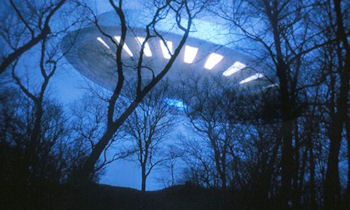
I wanted to share a link to a very interested find. James Gilliland claims to have had direct contact with 340 year old Pleiadian's, 9th dimensional 8 foot tall Anunnaki women, who he claims are very beautiful. His contact has allowed him access recollections from previous lifetimes and he has stated that the planet Nibiru is now a dead planet, which no longer has the ability to sustain life, and that it was merely used as a temporary "vehicle" or space station. His ranch has some very hi-profile visitors to the volume of UFO activity witnessed there. Anyway, he speaks very eloquently in his videos on youtube, which I'd be surprised if you don't already know about.
Here is one I watched recently.
https://www.youtube.com/watch?v=2W1a6zYp-VAAll the very best
Russell
Mars Attacked
Speculation has arisen out of the scientific community that the once-voluminous presence of water on the now desiccated Martian surface may be explained by the Late, Heavy Bombardment. This catastrophic event, of unknown provenance, took place over a couple of hundred million years from 3.9 Gyr ago, well after the solar system should have settled down nicely. Essentially, so the idea goes, a mass attack of asteroids/comets on the inner solar system delivered, for a short time only, a ready-made ocean to decorate the Red Planet's northern hemisphere (1). In turn, this ocean of asteroidal water created some of the terrain features so puzzling to planetary scientists, like the polygonal cracks in the ground often imaged by the Opportunity rover.
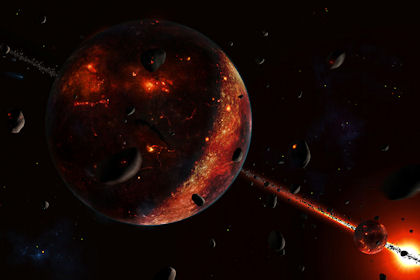
However, just as the Late, Heavy Bombardment came and went, so did the waters of Mars:
"[Tim] Parker [of NASA’s Jet Propulsion Laboratory in Pasadena, California], along with his JPL colleague Robert Anderson, says a tumultuous time in the solar system’s history known as the late heavy bombardment could provide the water with no need for a major change in the atmosphere. During this period about 4 billion years ago, a barrage of asteroids is thought to have collided with the inner planets. But because the Martian climate wouldn’t be equipped to hold on to the water, this ocean would freeze and disappear after just a few hundred million years – leaving potential life very little time to evolve." (1)
Presumably, this water is not lost, so much as buried as a frozen ocean now extant below the regolith? There is an assumption that this occurred many years ago, and that water in liquid form has not been seen since upon the surface. However, there is evidence for more recent liquid water than ~3.5 Gyrs ago (2), which may be connected to periodic extreme climate change due to Mars' variable orbital pattern and tilt (3).
This new hypothesis is reminiscent of the late veneer theory which held sway for decades as the most credible explanation for the existence of Earth's oceans, found deep within the solar system's 'snowline'. That theory, which held that comets delivered water to the dry Earth some time after it cooled from its primordial, molten state, has taken a serious bashing of late (4,5). It seems as though the Earth had some water to start with, raising questions about how the Sun failed to blast it away?
A very simple question to ask about this Mars scenario is this: If the asteroids are abundant in water, then why couldn't nearby Mars also be imbued with primordial waters, too? After all, it seems like Earth had its fair share. More likely, any catastrophism which blighted the Martian surface during the Late, Heavy Bombardment simply disrupted what was probably, before then, a rather lovely world in the making.
Written by Andy Lloyd,
31st March
2016
References: 1)
2) Andy Lloyd "A Martian Riddle" 22 September 2014
andylloyd.org/darkstarblog18.htm
3) Andy Lloyd "The Implications of Mars' Chaotic Tilt" 22 March 2015
andylloyd.org/darkstarblog24.htm
4) Andy Lloyd "Earth's Primordial Waters" 24 November 2015,
andylloyd.org/darkstarblog32.htm
5) Andy Lloyd 'Zircon Crystals Reveal Photosynthesis on Earth over 4 Billion Years Ago' 28 October 2015
andylloyd.org/darkstarblog31.htm
UK Dark Star Talk
I will be speaking at the Weird Weekend North conference on Saturday 2nd April 2016 at Rixton-with-Glazebrook Community Hall, Near Warrington, Cheshire on the subject of "The Hunt for Planet X".

I don't give many lectures, so this is a rare opportunity to come and hear me discuss Planet X, the recently discussed 'Planet Nine', Sitchin's Nibiru and various other Planet X material. Hopefully, I'll leave a few minutes to field some questions, and sign a few books.

You can keep informed of updates by following me on Twitter:
![]()
Or like my Facebook Page: https://www.facebook.com/darkstarandylloyd